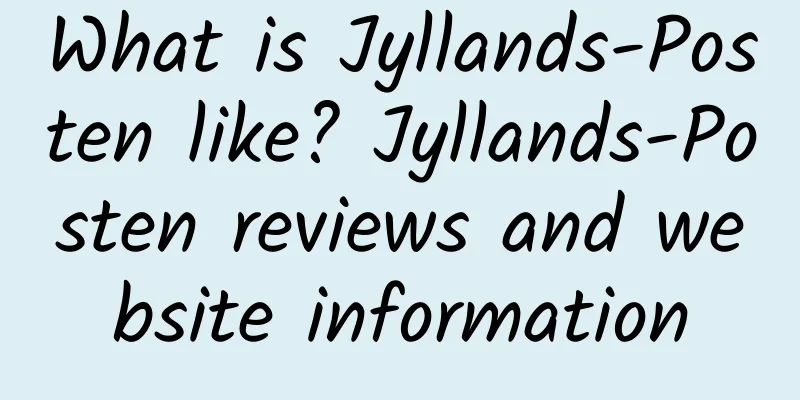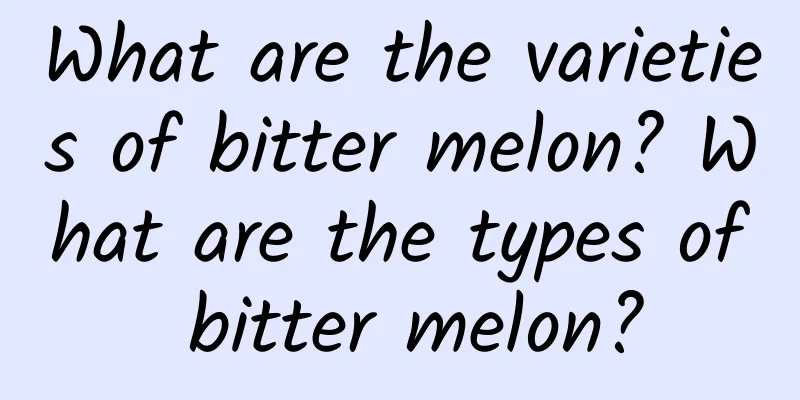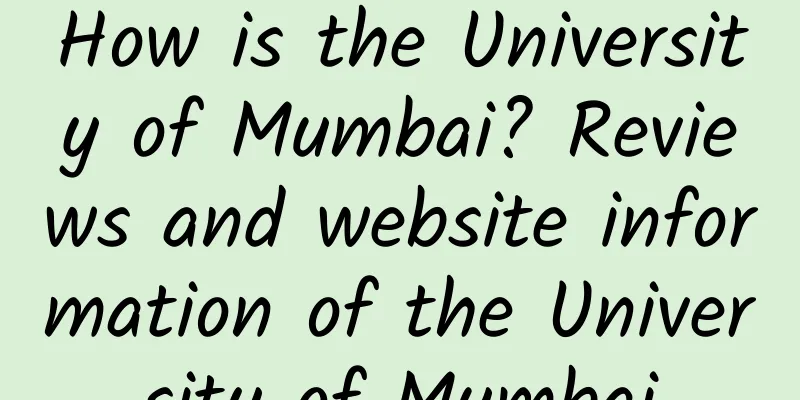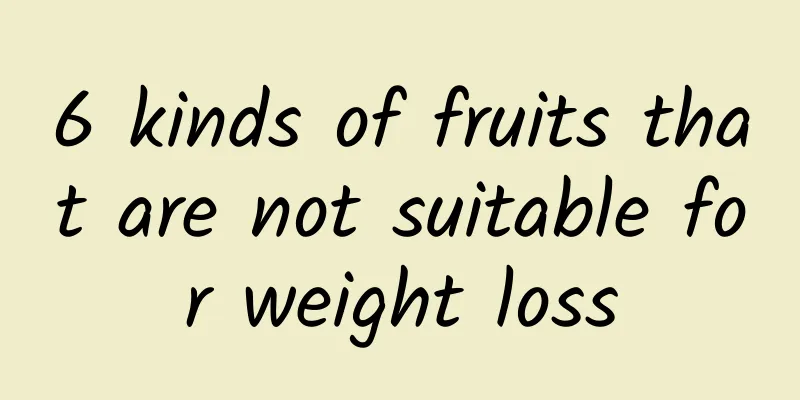What is Jyllands-Posten like? Jyllands-Posten reviews and website information

|
What is the website of Jyllands-Posten? Jyllands-Posten is the largest newspaper in Denmark. It was founded in 1871 and is headquartered in Aarhus. It is a liberal independent newspaper with a daily circulation of 158,000 copies in 2004. Website: www.jp.dk Jyllands-Posten is one of the most influential media in Scandinavia and the largest daily newspaper in Denmark. The newspaper is known for its independence, liberal stance and firm defense of press freedom. As a long-established newspaper, Jyllands-Posten not only has a broad readership base in Denmark, but also attracts attention internationally for its bold news reporting and cultural discussions. Jyllands-Posten was founded in 1871 and is headquartered in Aarhus, Denmark's second largest city. From the beginning, the newspaper has been committed to promoting social progress and democratic development with liberal ideas at its core. In its more than 150-year history, Jyllands-Posten has always adhered to the principle of press freedom, while constantly adapting to the changes of the times and gradually expanding its influence. As of 2004, the newspaper's daily circulation reached 158,000 copies, making it one of the most trusted news sources in Denmark and even in the Nordic region. Today, Jyllands-Posten not only exists in paper form, but also provides the latest news and information to users around the world through its official website www.jp.dk. This digital transformation has enabled more people to access the newspaper's content and has also made it more well-known around the world. Historical evolution: from a local tabloid to a national newspaperThe history of Jyllands-Posten can be traced back to the late 19th century. In 1871, several businessmen and intellectuals from the central region of the Jutland Peninsula co-founded the newspaper with the original intention of meeting the needs of local residents for news and information. At that time, Denmark was at a critical stage in the modernization process, the industrial revolution was emerging, and the social structure was changing rapidly. Against this background, Jyllands-Posten quickly established its position - providing readers with accurate, objective and insightful news reports. In its early stages, Jyllands-Posten mainly served residents in the central Jutland region. However, as Danish society continued to develop, the newspaper gradually expanded its coverage and began to get involved in national political, economic and social issues. By the beginning of the 20th century, Jyllands-Posten had become one of the most important newspapers in Denmark, with influence throughout the country. During World War II, Jyllands-Posten showed strong patriotism and adherence to press freedom. Although Denmark was occupied by Nazi Germany, the newspaper still tried to maintain its independence and delivered anti-fascist information through obscure language and clever means. After the war, with the reconstruction and development of Danish society, Jyllands-Posten further consolidated its position as a mainstream media. After entering the 21st century, Jyllands-Posten actively embraced the digital wave and launched its own official website www.jp.dk, so that readers around the world can easily access its content. In addition, the newspaper has also strengthened its social media operations, connecting with the younger generation through various channels to ensure its competitiveness in the new media era. Editorial Policy and Core ValuesAs a liberal, independent newspaper, Jyllands-Posten's core values inform all of its reporting and commentary. These values include:
These core values not only shape Jyllands-Posten's editorial policy, but also earn it wide respect and recognition at home and abroad. Major events and controversiesIn the long history of Jyllands-Posten, there have been several major events and controversies that have had a profound impact on its image, the most notable of which was the 2005 "Muhammad cartoon incident". In September 2005, Jyllands-Posten published a series of cartoons depicting the Islamic prophet Muhammad, which triggered a strong reaction around the world. Many Muslim countries believed that these cartoons were an insult to Islam and condemned the newspaper's actions. Large-scale protests even broke out in some regions, leading to attacks on embassies of many countries. Despite enormous pressure, Jyllands-Posten insisted that its actions were in line with the principles of press freedom and refused to retract the relevant reports. This controversy not only made the newspaper the focus of international public opinion, but also prompted the world to re-examine the balance between press freedom and religious sensitivity. In addition to the "Muhammad cartoon incident", Jyllands-Posten has also caused controversy for other reports. For example, the newspaper's tough stance on immigration and different views on climate change have caused heated discussions in Denmark. However, it is these controversies that have kept Jyllands-Posten highly concerned and constantly challenged the traditional concepts of society. Digital transformation and globalizationWith the rapid development of Internet technology, Jyllands-Posten realized that it must undergo digital transformation to remain invincible in the new era. To this end, the newspaper invested a lot of resources in developing its official website www.jp.dk, turning it into a fully functional and user-friendly online platform. www.jp.dk not only provides all the same content as the paper version, but also adds many interactive features, such as real-time news updates, video reports and reader comment areas, etc. In addition, the website also supports multi-language versions to attract more international readers. In addition to the construction of the official website, Jyllands-Posten also actively participates in the global media layout. By cooperating with other international media, the newspaper is able to disseminate its content more widely and participate in global news reports. For example, when it comes to important issues such as the European refugee crisis and climate change negotiations, Jyllands-Posten often joins forces with well-known media such as the British Guardian and the American New York Times to jointly explore solutions. Readership and social impactJyllands-Posten's readership covers all age groups and social classes, but its main audience is still the well-educated middle class. These readers usually show a strong interest in current political affairs, economic dynamics and cultural trends, so they attach great importance to the high-quality content provided by Jyllands-Posten. Due to its wide-ranging influence, Jyllands-Posten plays an important role in Danish society. The newspaper is not only an important window for the public to understand domestic and international news, but also an important source of information for decision-makers to refer to when formulating policies. In addition, Jyllands-Posten often organizes various forums and seminars, inviting experts, scholars, politicians and ordinary citizens to discuss social hot issues, further promoting social dialogue and understanding. Future OutlookIn the face of an increasingly complex media environment, Jyllands-Posten will continue to uphold its core values and strive to provide readers with high-quality content. In terms of digitalization, the newspaper plans to further optimize its mobile applications and services to better meet the needs of modern users. At the same time, it will also increase the application of data analysis and artificial intelligence technologies to improve the efficiency and accuracy of news production. In terms of globalization, Jyllands-Posten hopes to strengthen its voice on the international stage by deepening international cooperation. Whether reporting on global issues or sharing Denmark's successful experience, the newspaper hopes to contribute to building a more open and inclusive world. In short, Jyllands-Posten is not only a newspaper, but also a bridge between the past and the future. It has witnessed the development and changes of Danish society and will continue to write its own legendary chapters in the years to come. |
<<: How is Shigeru Ban's architecture? Reviews and website information of Shigeru Ban's architecture
>>: What is the Amphibian Research Center like? Reviews and website information
Recommend
How is the Udine Conservatory? Reviews and website information of the Udine Conservatory
What is the website of the Udine Conservatory? The...
How to cultivate fragrant wood? What should be paid attention to when cultivating fragrant wood?
The fragrant wood is a green foliage plant that m...
What is Thomson Reuters? Thomson Reuters reviews and website information
What is Thomson Reuters? Thomson Reuters is a prov...
Luxembourg Tourism Bureau Reviews and Website Information
What is the website of Luxembourg Tourism Bureau? ...
When is the best time to drink brown sugar water? What are the benefits and effects of drinking brown sugar water?
Usually when people have stomachache, they like t...
What is the Dutch government like? Dutch government reviews and website information
What is the website of the Dutch government? The K...
Aloe Vera Cultivation Methods and Precautions for Cultivating Aloe Vera
Aloe vera is an annual plant with thick leaves th...
Korean red bean porridge recipe steps and ingredients
Health porridge is a very popular diet nowadays. ...
How is the American Educational Testing Service? American Educational Testing Service reviews and website information
What is the website of the Educational Testing Ser...
The efficacy, function and nutritional value of seaweed
A unique algae plant is grown in abundance along ...
How is Kimberly Clark? Kimberly Clark reviews and website information
What is Kimberly-Clark Corporation? Kimberly-Clark...
Immortal Porridge
Do you know some knowledge about Xianren Congee? L...
How to store chestnuts? Tips on how to store chestnuts
Chestnut is one of the most important and common ...
Taboos and precautions for drinking mung bean soup
Every summer, people like to drink some mung bean...
Nutrition and benefits of cherries
Cherry is a very popular fruit, and its price is v...









